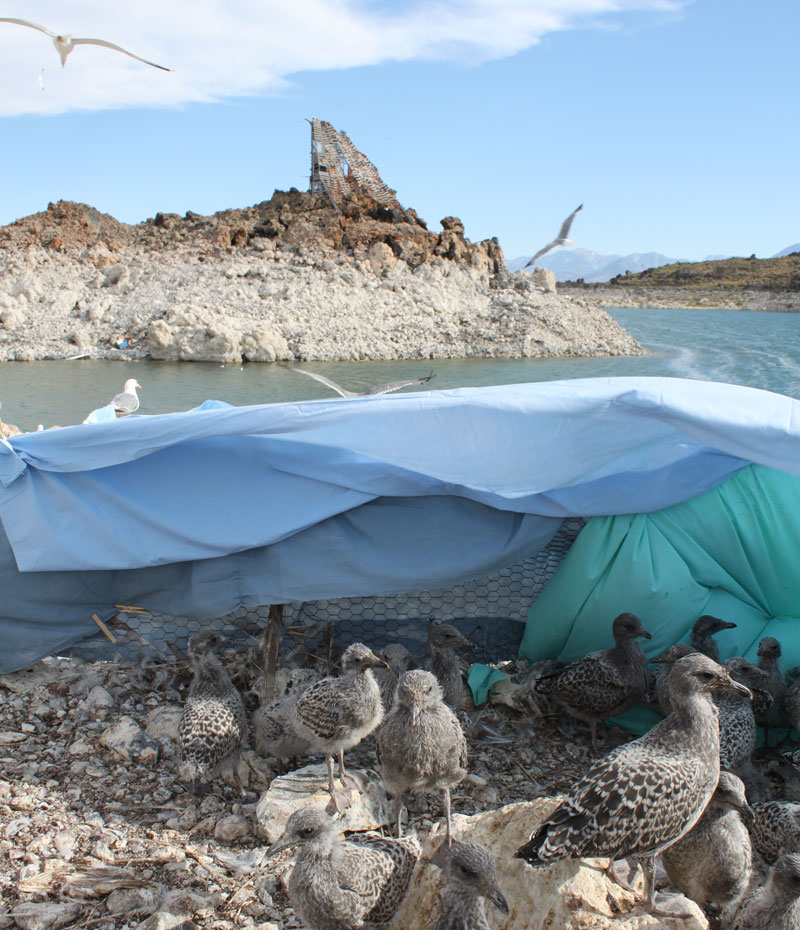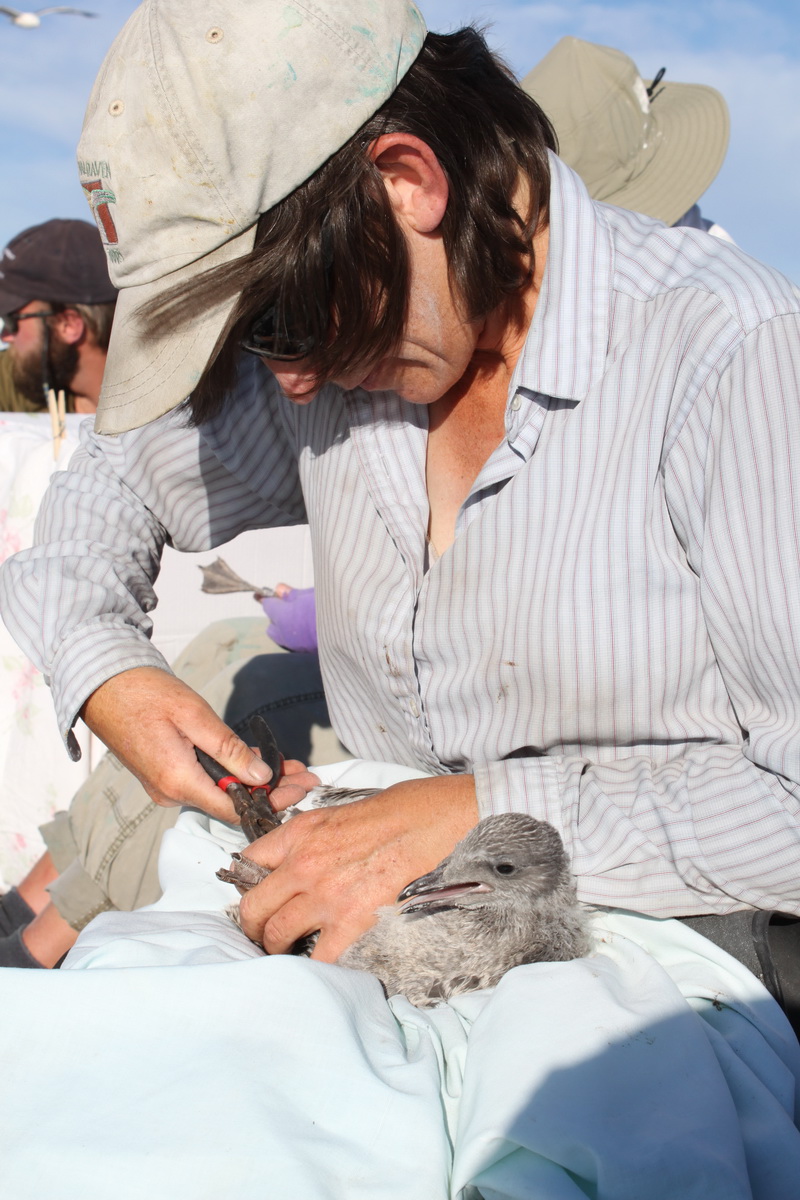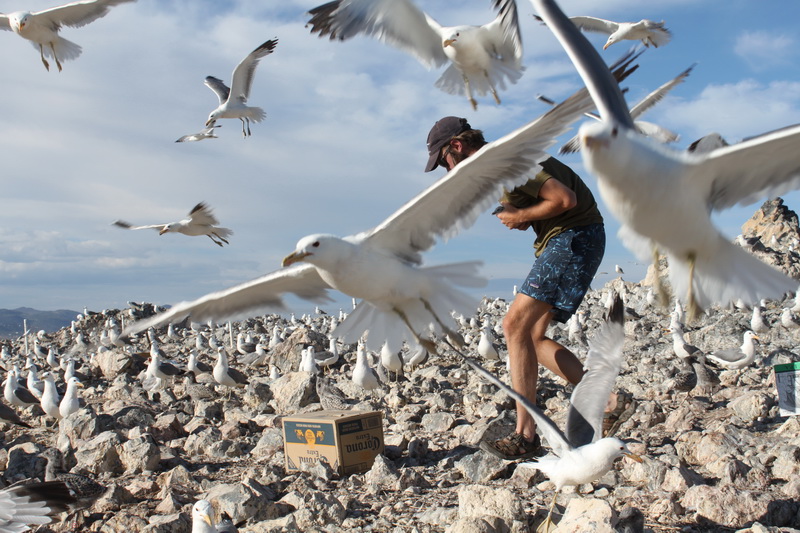
This post was written by Erica Tucker, 2012 Birding Intern.
Six of us are packed into a small motor boat, laden with kiddie gates, cardboard boxes, and a crate of old sheets. We are reviewing the strategy of our siege as we cross to Twain Island—move quickly, stay low, don’t stop. We are preparing to band California Gull chicks in several research plots on the small islands east of Negit Island in Mono Lake, a monitoring project that started in 1983.

By capturing the chicks in small plots that are surrounded by 2-foot-high chicken wire fences, we can examine the birds and extrapolate information on their health and reproductive success. In addition, hopefully the bands we fasten to the chicks’ legs will be seen in the future, allowing us to learn more about these gulls’ migration and nesting.
We step onto the island and gulls spiral up from their nests, screaming their displeasure. We move directly to the plots and quickly set up the baby gates to form a corral. Then we move to the far end of the plot and walk in a line through the colony, placing small empty boxes over nests with the smallest downy chicks and herding the rest of the flightless chicks towards the pens. When they are all contained and sheets have been draped over the pens to shade the birds from the late-afternoon sun, we hand chicks to the two banders. These women rapidly place a metal band and a more easily read red or green plastic band on each bird’s legs. The chicks fight back by biting, or reflexively vomit and/or poop. It is a smelly, chaotic process. Each chick is examined for ticks and mites, and weighed before being released.

This may be the most challenging part of the process: making it back to their individual nest territory. The adult gulls, which have been watching and calling for their young, now inspect each chick and drive away intruders from their fiercely protected roughly 1-square-meter plot. Some chicks fight back, scrappy ones we hope to see in the future on the Farallon Islands or San Francisco Bay. Others form a lost and found crèche, waiting for the commotion to die down and for their parents to call them home.

When all chicks are banded, we hurry away from the plot to let normal colony behavior resume, and then we head back to our basecamp on Krakatoa Island. Krakatoa once was the movie set for the 1953 movie “Fair Wind to Java,” and the increasingly decrepit chicken wire and papier mache volcano is our home away from home. There we scrub off the day’s gull excrement and make a meal that we share while watching the sun set and moon rise. We get to bed too late, considering that our day starts at 5:00am, but we will have a siesta during the hottest time of the day so the chicks are not stressed any further by the heat.
At the end of four days, 589 chicks wear new bands, and we will be waiting to see them during future migrations and maybe even one day defending their own territory on Mono Lake’s islands.

See my post on the bird and wildlife sightings section (a dropdown under “community” on this website), for an update on color-band detections at Mono Lake this summer. We’ve (I’ve) been observing fledged, independantcolor-banded gull “chicks” (now juveniles) on the lake shore over the last few weeks. They’re feasting on shrimp and flies alongside the adults – so inspiring to see these healthy independantbirds! I’ve seen 4 color-banded juveniles on the lakeshore that we banded as gawky flightless chicks just a month ago. Another was already seen on the coast. Pretty amazing when you consider we only band about 3-4% of the total chicks fledged. Color banded gulls from past years have also been seen on the lake this summer (from 4 generations, or cohorts!)